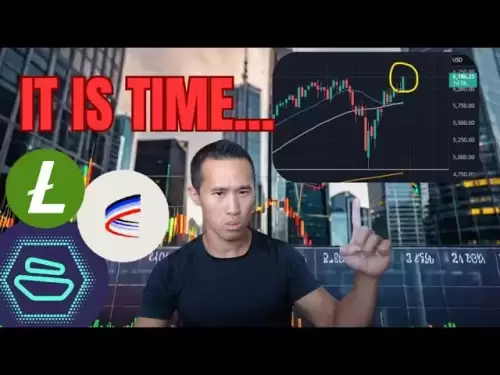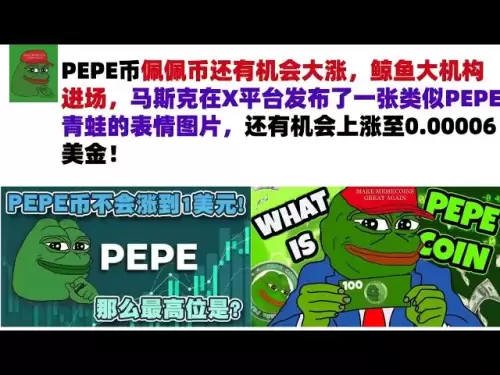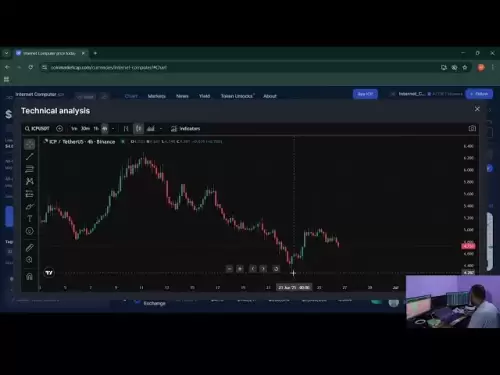-
 Bitcoin
Bitcoin $107,247.2038
-0.18% -
 Ethereum
Ethereum $2,424.7947
0.34% -
 Tether USDt
Tether USDt $1.0003
-0.02% -
 XRP
XRP $2.1171
-3.33% -
 BNB
BNB $645.6618
0.06% -
 Solana
Solana $141.5898
-1.32% -
 USDC
USDC $0.9998
0.00% -
 TRON
TRON $0.2710
-0.41% -
 Dogecoin
Dogecoin $0.1602
-2.99% -
 Cardano
Cardano $0.5553
-2.28% -
 Hyperliquid
Hyperliquid $36.3019
-2.42% -
 Bitcoin Cash
Bitcoin Cash $491.7212
2.04% -
 Chainlink
Chainlink $13.0810
-0.23% -
 Sui
Sui $2.6080
-5.06% -
 UNUS SED LEO
UNUS SED LEO $9.0040
-0.05% -
 Stellar
Stellar $0.2350
-3.06% -
 Avalanche
Avalanche $17.2294
-2.31% -
 Toncoin
Toncoin $2.8075
-1.05% -
 Shiba Inu
Shiba Inu $0.0...01121
-3.43% -
 Litecoin
Litecoin $84.2215
-0.32% -
 Hedera
Hedera $0.1429
-4.88% -
 Monero
Monero $312.2199
-0.90% -
 Dai
Dai $0.9997
-0.01% -
 Ethena USDe
Ethena USDe $0.9999
-0.02% -
 Polkadot
Polkadot $3.2973
-2.60% -
 Bitget Token
Bitget Token $4.4742
3.12% -
 Pi
Pi $0.5631
-10.10% -
 Uniswap
Uniswap $6.7817
-2.06% -
 Pepe
Pepe $0.0...09252
-3.74% -
 Aave
Aave $251.3830
-2.24%
Is it necessary to stop loss when the high-level long upper shadow line opens low the next day?
A long upper shadow candle at a high level signals strong resistance and potential reversal, especially when followed by a gap-down opening, reinforcing bearish sentiment and highlighting the need for a stop loss.
Jun 27, 2025 at 08:22 am
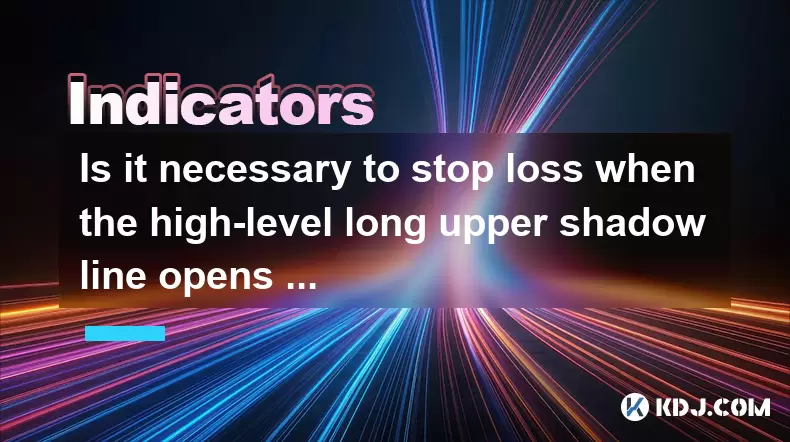
Understanding the High-Level Long Upper Shadow Line
In technical analysis, a long upper shadow line refers to a candlestick pattern where the price moves significantly higher during the session but closes much lower, forming a long wick on the top. When this occurs at a high level, it suggests strong resistance and potential reversal.
This type of candlestick is often interpreted as a bearish signal, especially when it appears after a sustained uptrend. The long upper shadow indicates that buyers attempted to push prices higher but were met with heavy selling pressure. As a result, the market rejected the higher levels, which may lead to a short-term or even medium-term pullback.
What Happens When the Next Day Opens Lower?
If the following day opens lower than the previous candle's close, it reinforces the bearish sentiment. This kind of gap-down opening can be interpreted as confirmation of the rejection seen in the prior session. It shows that sellers are still in control and that momentum has shifted from bullish to bearish.
Traders often see this as a sign that the upward trend may have stalled. In such scenarios, the question arises: should you implement a stop loss?
The answer depends on several factors including your trading strategy, position size, entry point, and risk tolerance. However, considering the bearish implications of the pattern and the subsequent gap-down open, setting a stop loss becomes highly advisable to protect capital and manage risk effectively.
Evaluating Risk Through Stop Loss Placement
A stop loss is a predetermined exit point for a trade that helps limit losses if the market moves against you. In the context of a high-level long upper shadow followed by a down gap, placing a stop loss just above the high of the long upper shadow candle is a common practice among traders.
Here’s how to do it step-by-step:
- Identify the highest point of the candle with the long upper shadow.
- Place your stop loss slightly above that level (typically 0.5% to 1% depending on volatility).
- Ensure your stop loss aligns with your overall risk management plan — ideally not risking more than 1% to 2% of your account per trade.
- Use a trailing stop if the price moves favorably before reversing.
- Avoid placing stops too tight, which could get triggered by normal market noise.
By doing so, you're acknowledging the possibility of a reversal while protecting yourself from excessive downside risk.
How to Confirm the Pattern Before Taking Action
Before deciding whether to place or adjust a stop loss, confirm the validity of the pattern using additional tools and observations:
- Look at volume — higher-than-average volume during the formation of the long upper shadow increases the likelihood that the rejection was real and significant.
- Check for confluence with key resistance levels — if the candle formed near a known resistance area, its significance is stronger.
- Observe the next candle — a bearish engulfing pattern or a large red candle that follows confirms the reversal and supports tighter stop placement.
- Use moving averages or oscillators like RSI or MACD to check for overbought conditions or divergences that support the bearish outlook.
These elements help validate the strength of the signal and provide better clarity on whether to maintain or adjust your stop loss.
Psychological Factors Behind the Pattern
Market psychology plays a critical role in understanding why this pattern is important. When a candle forms with a long upper shadow, it reflects failed attempts by bulls to push the price higher. The bears then take over, dragging the price back down toward or below the opening level.
When the next session opens lower, it signals that the bears are gaining dominance. Traders who entered long positions based on the prior bullish move may now feel trapped, leading to panic selling or forced exits. This further fuels the downward movement.
Recognizing these psychological dynamics allows traders to make more informed decisions about risk exposure and position sizing, reinforcing the need for proper stop loss usage.
Frequently Asked Questions
Q: Can a long upper shadow appear in both bullish and bearish markets?
Yes, a long upper shadow can occur in any market condition. However, its significance varies depending on the broader trend. In an uptrend, it often signals weakness, while in a downtrend, it might indicate temporary rallies failing to sustain.
Q: Is it safe to hold a position without a stop loss after seeing this pattern?
It's generally not recommended. Without a stop loss, you expose yourself to potentially large losses if the market reverses sharply. Even if the pattern doesn't always lead to a major decline, managing risk is crucial.
Q: Should I adjust my stop loss if the next candle closes higher than the long shadow candle?
Yes, if the next candle closes above the high of the long upper shadow, it invalidates the bearish signal. In that case, reassess your position and consider adjusting your stop loss accordingly or exiting the trade.
Q: How does this candlestick pattern compare to others like the shooting star or hanging man?
The long upper shadow is similar to the shooting star in appearance, especially when it appears at the top of an uptrend. The main difference lies in the body size and the context in which they appear. Both are considered bearish reversal patterns and should be treated similarly in terms of risk management.
Disclaimer:info@kdj.com
The information provided is not trading advice. kdj.com does not assume any responsibility for any investments made based on the information provided in this article. Cryptocurrencies are highly volatile and it is highly recommended that you invest with caution after thorough research!
If you believe that the content used on this website infringes your copyright, please contact us immediately (info@kdj.com) and we will delete it promptly.
- TRUMP Token Tumult: Liquidity Exit Sparks Crash Fears!
- 2025-06-27 12:30:12
- Elementary, My Dear Collector: Sherlock Holmes Coins Fetch High Prices!
- 2025-06-27 12:35:12
- Sui Growth: Blockchain Ecosystem Expansion in 2025
- 2025-06-27 12:47:14
- Coinbase Stock Soars to New Highs: Is the Rally Sustainable?
- 2025-06-27 12:47:14
- Pi Coin Price Prediction Today: Will It Ever Break Free?
- 2025-06-27 12:50:12
- Cryptos to Buy Now: Riding the Climbing Price Wave
- 2025-06-27 12:52:09
Related knowledge
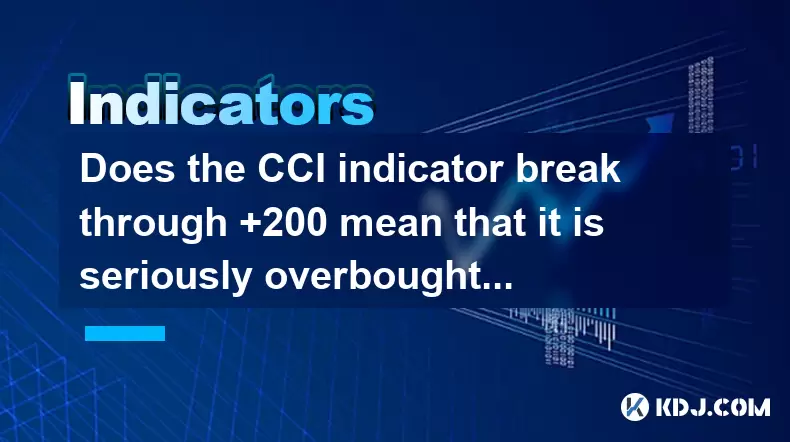
Does the CCI indicator break through +200 mean that it is seriously overbought?
Jun 27,2025 at 01:08pm
Understanding the CCI Indicator and Its Relevance in Cryptocurrency TradingThe Commodity Channel Index (CCI) is a technical analysis tool widely used by traders in various financial markets, including cryptocurrency. Originally developed by Donald Lambert for commodities, it has since been adopted across asset classes to identify overbought or oversold ...

How lethal is the death cross of EXPMA12 and 50 lines?
Jun 27,2025 at 11:15am
Understanding the Death Cross in EXPMA IndicatorsThe death cross is a technical analysis pattern that signals a potential bearish trend reversal. In the context of the EXPMA (Exponential Moving Average), particularly when analyzing the crossover between the EXPMA12 and EXPMA50 lines, traders often interpret this as a strong sell signal. The death cross ...
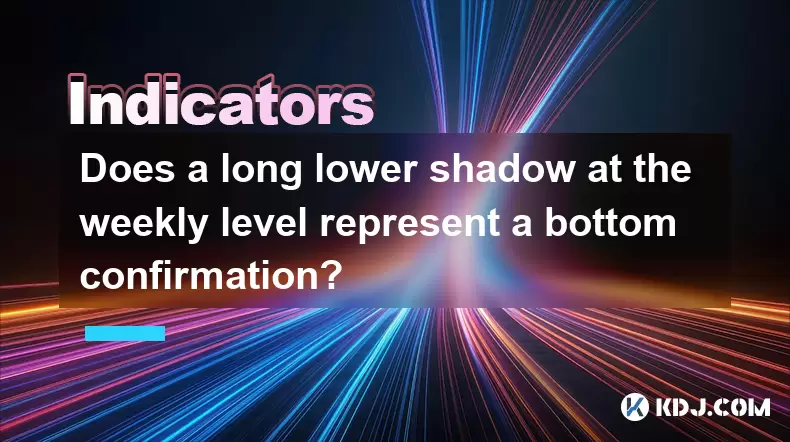
Does a long lower shadow at the weekly level represent a bottom confirmation?
Jun 27,2025 at 10:56am
Understanding the Weekly Lower Shadow in Candlestick AnalysisIn cryptocurrency trading, weekly candlestick patterns are often scrutinized for potential trend reversals. A long lower shadow at the weekly level indicates that during the week, sellers pushed prices down significantly but were met with strong buying pressure that closed the candle near its ...
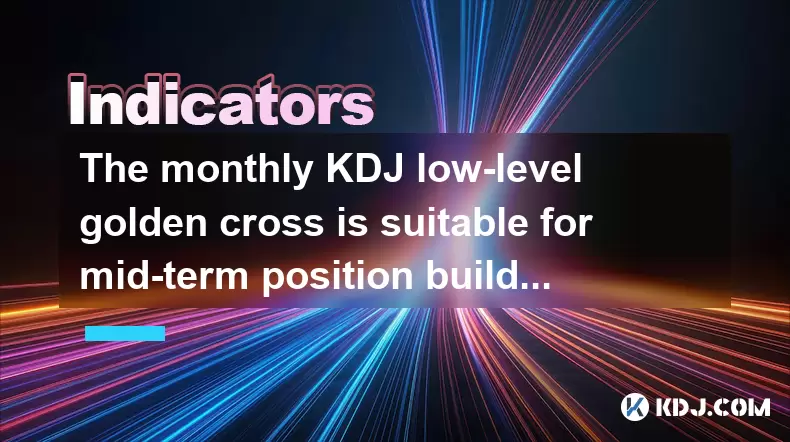
The monthly KDJ low-level golden cross is suitable for mid-term position building?
Jun 27,2025 at 03:14am
Understanding the Monthly KDJ IndicatorThe KDJ indicator, also known as the stochastic oscillator, is a momentum tool widely used in technical analysis within the cryptocurrency market. It consists of three lines: the K line, the D line, and the J line. These lines help traders identify overbought or oversold conditions, potential trend reversals, and e...
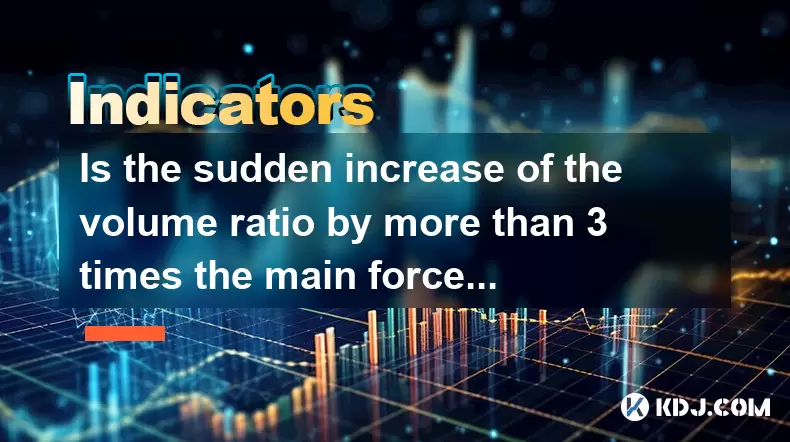
Is the sudden increase of the volume ratio by more than 3 times the main force entering the market?
Jun 27,2025 at 12:57pm
Understanding Volume Ratio in Cryptocurrency TradingIn cryptocurrency trading, the volume ratio refers to the comparison between the current trading volume and the average volume over a specific period, usually 20 or 30 days. This metric helps traders identify unusual market activity that could signal potential price movements. When the volume ratio inc...

Is it necessary to stop loss when the high-level long upper shadow line opens low the next day?
Jun 27,2025 at 08:22am
Understanding the High-Level Long Upper Shadow LineIn technical analysis, a long upper shadow line refers to a candlestick pattern where the price moves significantly higher during the session but closes much lower, forming a long wick on the top. When this occurs at a high level, it suggests strong resistance and potential reversal. This type of candle...

Does the CCI indicator break through +200 mean that it is seriously overbought?
Jun 27,2025 at 01:08pm
Understanding the CCI Indicator and Its Relevance in Cryptocurrency TradingThe Commodity Channel Index (CCI) is a technical analysis tool widely used by traders in various financial markets, including cryptocurrency. Originally developed by Donald Lambert for commodities, it has since been adopted across asset classes to identify overbought or oversold ...

How lethal is the death cross of EXPMA12 and 50 lines?
Jun 27,2025 at 11:15am
Understanding the Death Cross in EXPMA IndicatorsThe death cross is a technical analysis pattern that signals a potential bearish trend reversal. In the context of the EXPMA (Exponential Moving Average), particularly when analyzing the crossover between the EXPMA12 and EXPMA50 lines, traders often interpret this as a strong sell signal. The death cross ...

Does a long lower shadow at the weekly level represent a bottom confirmation?
Jun 27,2025 at 10:56am
Understanding the Weekly Lower Shadow in Candlestick AnalysisIn cryptocurrency trading, weekly candlestick patterns are often scrutinized for potential trend reversals. A long lower shadow at the weekly level indicates that during the week, sellers pushed prices down significantly but were met with strong buying pressure that closed the candle near its ...

The monthly KDJ low-level golden cross is suitable for mid-term position building?
Jun 27,2025 at 03:14am
Understanding the Monthly KDJ IndicatorThe KDJ indicator, also known as the stochastic oscillator, is a momentum tool widely used in technical analysis within the cryptocurrency market. It consists of three lines: the K line, the D line, and the J line. These lines help traders identify overbought or oversold conditions, potential trend reversals, and e...

Is the sudden increase of the volume ratio by more than 3 times the main force entering the market?
Jun 27,2025 at 12:57pm
Understanding Volume Ratio in Cryptocurrency TradingIn cryptocurrency trading, the volume ratio refers to the comparison between the current trading volume and the average volume over a specific period, usually 20 or 30 days. This metric helps traders identify unusual market activity that could signal potential price movements. When the volume ratio inc...

Is it necessary to stop loss when the high-level long upper shadow line opens low the next day?
Jun 27,2025 at 08:22am
Understanding the High-Level Long Upper Shadow LineIn technical analysis, a long upper shadow line refers to a candlestick pattern where the price moves significantly higher during the session but closes much lower, forming a long wick on the top. When this occurs at a high level, it suggests strong resistance and potential reversal. This type of candle...
See all articles






















